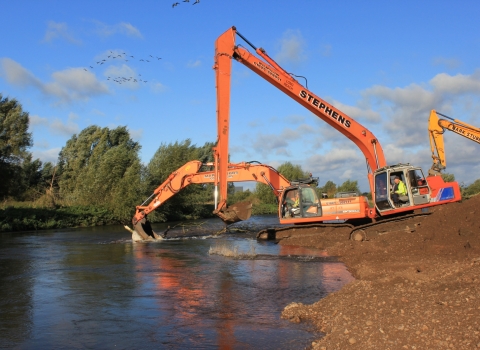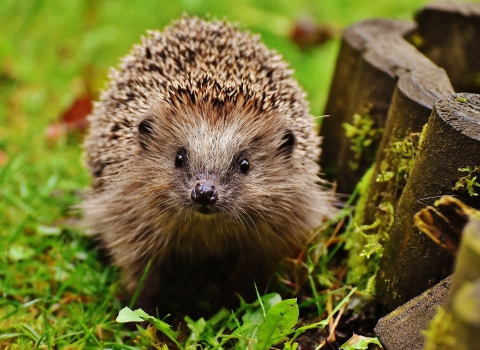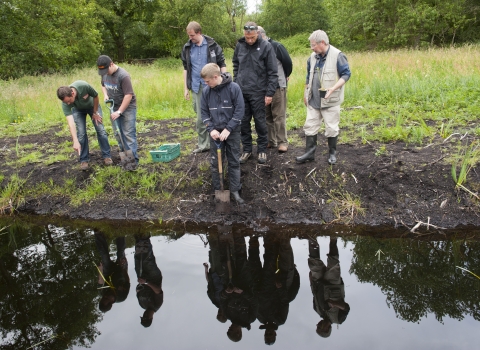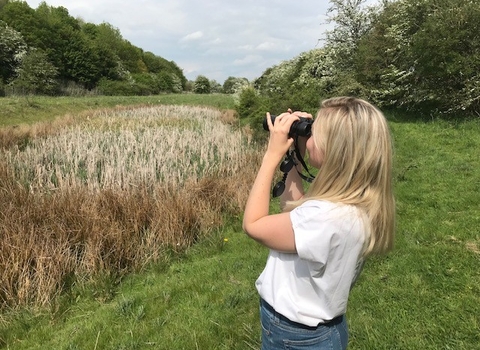Restoring Staffordshire's watercourses
A county-wide scheme which aims to restore the ecological health of Staffordshire's watercourses.
The aim of the Staffordshire Rivers Living Landscape scheme is to meet the targets of the EU's Water Framework Directive (WFD) and restore all of Staffordshire's waterways and waterbodies to 'Good Ecological Status' by 2027.
To achieve this we must influence land use. In many cases this means reducing or buffering against the impacts of intensive agriculture and urbanisation. This involves working with land owners and land managers, planners, engineers, local residents, community groups, anglers and policy makers.
How we achieve this
Under the Staffordshire Rivers Living Landscape scheme, the Trust is working on a number of projects to repair damaged habitats and to reconnect species with the wider landscape.
The work often involves 're-naturalising' waterways, by for example:
- removing weirs, culverts, sluices, dams and other barriers;
- providing a wider strip of habitat along stream corridors;
- reinstating meanders and recreating river islands;
- restoring the link between rivers and their associated wetlands, such as grazing marsh, wet woodland, fen, swamp, reedbed, ox-bows, ponds, backwaters and valley mires.
These actions benefits many threatened species, from fish to aquatic insects, birds and mammals, by providing new or improved habitats.
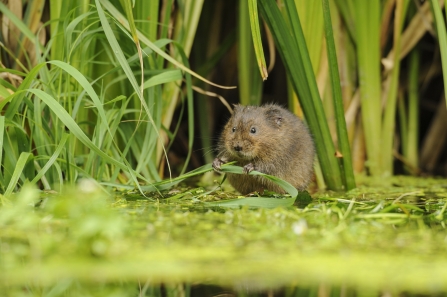
Credit: Terry Whittaker/2020VISION
Work on the ground
1. The River Trent at Catton Hall in East Staffordshire is being 're-naturalised'. The shorelines have been gradually sloped and islands have been added, creating new habitats for everything from wetland insects to fish, birds and mammals.
2. Large root structures, chopped branches and whole trees are being dropped into Stafford Brook on Cannock Chase. The wood provides habitats and hiding places for fish and invertebrates and enhances the natural processes of the brook, triggering the re-sorting of gravels and silt deposits.
3. Livestock trampling on the banks of watercourses can lead to multiple problems. Banks collapse so crayfish and water voles cannot burrow into them and soil and pollutants are washed into watercourses creating problems for spawning fish. This issue is being addressed through the Gayton Brook Catchment Project in mid Staffordshire.
4. Over the next four years, we plan to remove a redundant weir on a tributary of the River Dove near Ellastone. The weir is a barrier to natural river processes and prevents the movement of fish and invertebrates.

Credit: Nick Mott
How you can get involved
- Could you ‘adopt’ a section of river or stream near where you live? Visit it as often as you can and keep a close eye on trends and for any problems. If you see dead fish or other obvious signs of pollution contact the Environment Agency’s Freephone 24 hour helpline on 0800 807060 and request feedback after staff have visited the site.
- Another important role you can play is to send us records of the species you see during your visits to watercourses. The more information we have about wildlife (especially protected species such as nesting birds, otters, water voles, native crayfish, great-crested newts), the easier it is for us protect the habitats they depend on.
- Please also let us know about the locations of problem species such as American signal crayfish, Japanese knotweed and zebra mussels.

